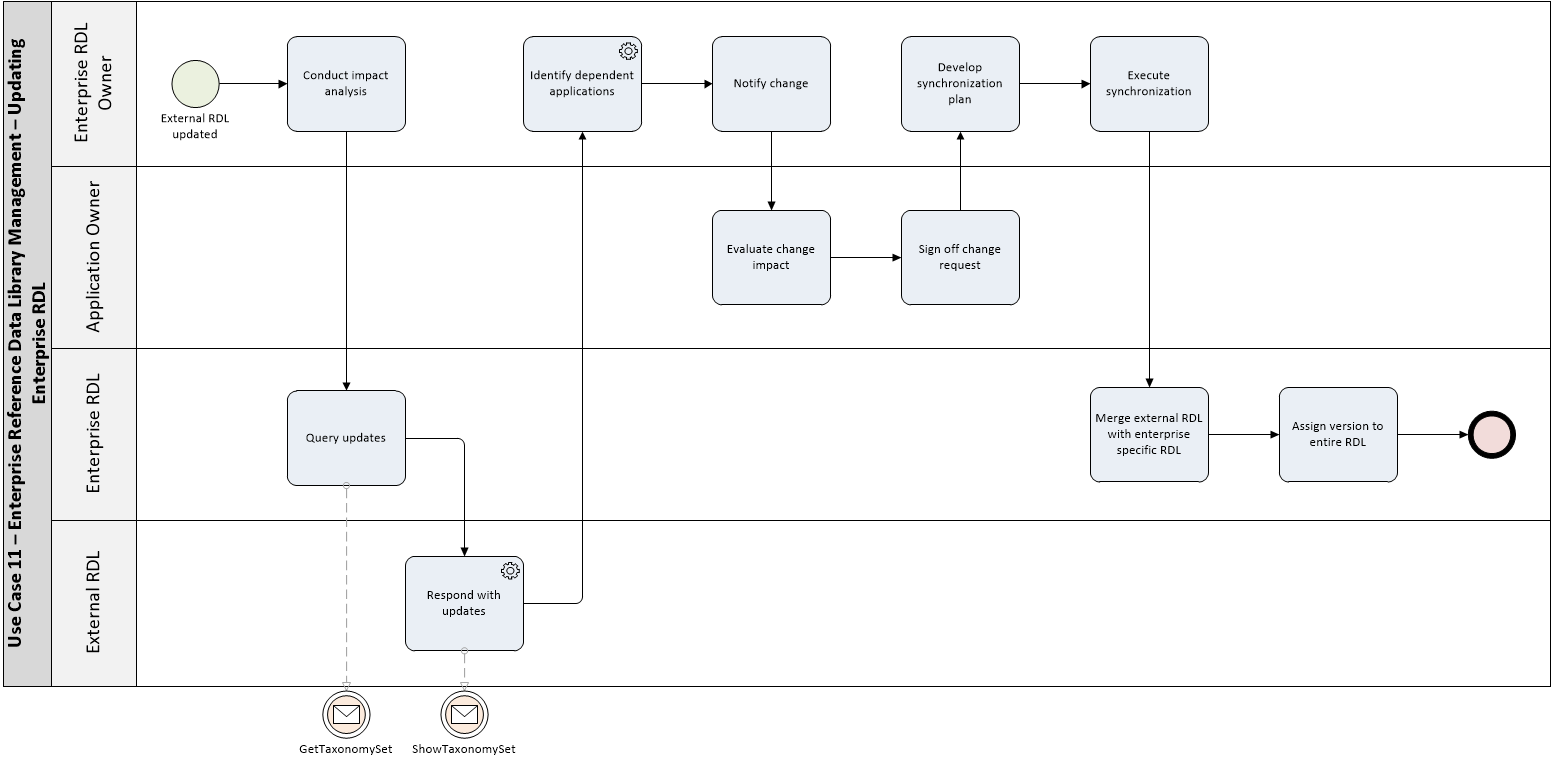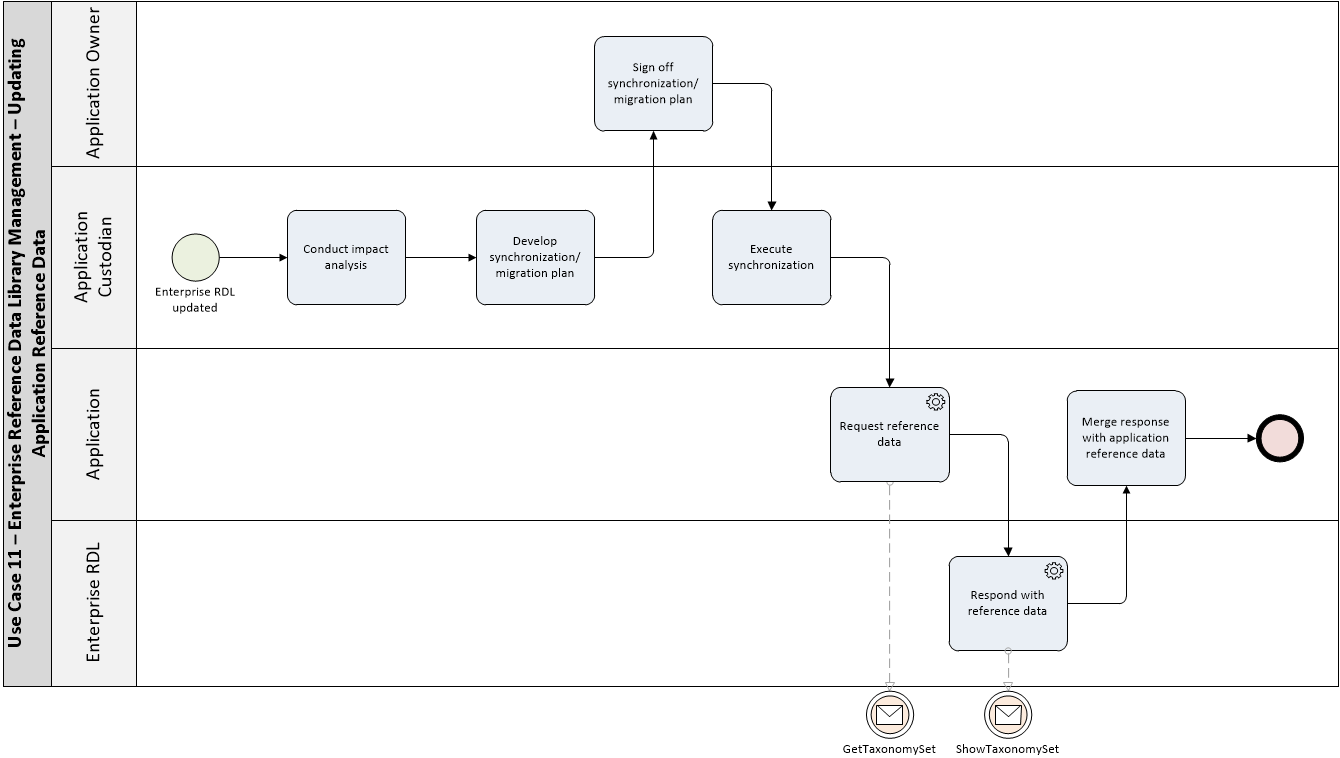This Use Case describes the process for updating an Owner/Operator’s enterprise reference data environment. This use case assumes that an enterprise has previously established an Enterprise Reference Data Library (RDL) that is utilized in part by each interconnected system, and desires to update its Enterprise RDL and subsequently each application’s reference data through a series of carefully managed updates. The updates can originate from a notification by an External RDL, which may be a shared industry RDL or a supplier RDL. The Enterprise RDL should query all the data updates made in the External RDL since the last time the Enterprise RDL was updated, allow the Enterprise RDL Owner to conduct impact analysis on each data update, and decide which data updates to accept for a new version-controlled release of the Enterprise RDL to subscriber applications.
Background
An Enterprise RDL is essential for interoperability among systems in an enterprise. The ontological definitions, codes, and taxonomies that are utilized throughout an enterprise require standardization to allow consistent operational performance and management analysis. The management of this Enterprise RDL must follow strict configuration control methodologies to maintain consistency and project compliance. Without this management, each project is forced to develop their own reference data, resulting in human-interpretation of codes and a lack of interoperability.
Enterprises will want to map their internal Enterprise RDL to External RDLs in order interpret subsequently exchanged business data configured against those External RDLs in a repeatable manner. Not all requisite data may exist in an External RDL, and internal Enterprise RDLs will have enterprise-specific requirements. These extensions may be published and merged into the External RDLs. In the case of an industry RDL, this will be conducted through a standardization process.
When the External RDL is revised, an enterprise-level impact analysis review is required to determine the need to incorporate each revision/addition/deprecation, resulting in a list of the data changes that should be propagated into the Enterprise RDL. Once this list is determined, the approved data changes can be imported into a new version of the Enterprise RDL and notifications sent to all application and project owners.
Scope
This discussion focusses on reference data: reference data is distinguished from master data in that it is less frequently changing and is generally reusable across enterprises.
Successful End Condition
Reference data from an External RDL has been synchronized within line-of-business applications.
Actors
Business Actors
- Engineering
- Enterprise RDL Owner
- Application Owner
System Actors
- Enterprise RDL
- External RDL
Triggers
- Engineering notifies the Enterprise RDL Owner of updates that need to occur (e.g. due to a project or work).
- External RDL notifies the Enterprise RDL Owner of content changes.





